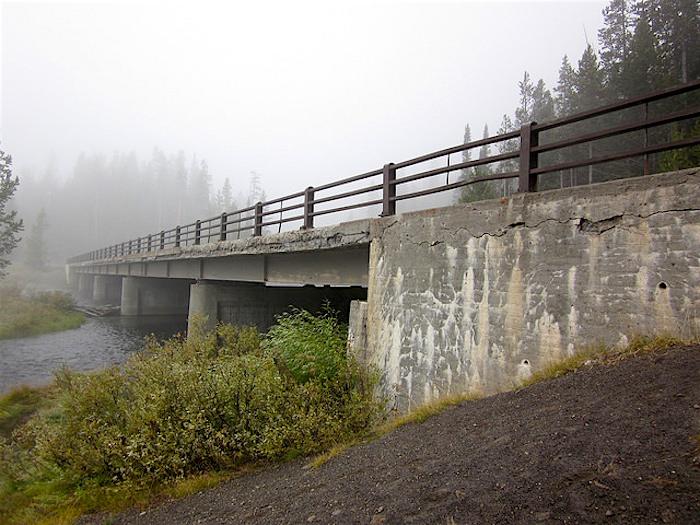
The Lewis River Bridge in Yellowstone National Park needs to be replaced/NPS
Nearly six decades into its life, the Lewis River Bridge in Yellowstone National Park has reached old age and has deteriorated to the point where it either needs "extensive rehabilitation" or to be completely replaced. Park staff is proposing to have the bridge replaced duing a two-year project that would move it slightly east of its current location and improve parking at the popular spot.
The bridge being contemplated would run somewhere between 300 and 500 feet in length and be straighter than the current span, which runs 273 feet and is located between the South Entrance and the turn off to Grant Village.
According to the Park Service, a new bridge is needed to address the deteriorating condition of the Lewis River Bridge. Constructed in 1960, a recent Federal Highway Administration Inspection Report cited problems with the bridge’s concrete surface, foundation, and railings, and judged it to be in poor overall condition. Along with the decking and railing problems, the foundation that sinks beneath the river is being impacted by "scouring," in which the river currents essentially dig out the sediments and rubble around the abutments.
Continued scouring could jeopardize the stability of the abutments, according to the park staff.
In addition to replacing the bridge, the proposal outlines plans to reconfigure the adjacent Lewis River Falls parking area to reduce traffic hazards. If approved and funding is secured, construction would begin in the spring of 2019 and continue through 2020. (Emphasis added) If the project moves forward, the South Entrance Road would remain open.
Comments on the park's plan must be received by July 23. You can find additional details on the proposed bridge and a place to leave your comments at this site.
An Environmental Assessment will be prepared in compliance with the National Environmental Policy Act and Section 106 of the National Historic Preservation Act to provide the decision-making framework to evaluate a range of alternatives to meet project objectives and evaluate potential issues and impacts to park resources and values.


 Support Essential Coverage of Essential Places
Support Essential Coverage of Essential Places







Add comment